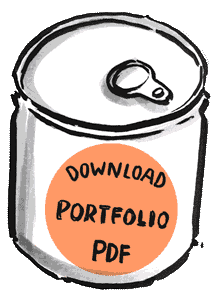
12 Mai, 2017 | Blog, Event, visual facilitating
Wie eine Future Town entsteht
Industrieroboter, die alles können. Ja, vielleicht. Aber der Intelligente humanoiden Roboter, der uns im Arbeitsleben komplette ersetzt, den wird es in den nächsten Jahrzehnten wohl nicht geben, sagt Obi Felten, Bereichsleiterin bei der Google Schwester X in einem Interview.
Während eines 1 1/2 -tägigen Workshops mit 8 Personen entstand diese Future-Stadt. Ich war zwar gebrieft, um wen es ging, welche Abteilung des Unternehmens, welches Produkt und auch eine Zielsetzung wurde im Vorfeld definiert.
Voraussichtlich ein Graphic recording. Der Moderator legte los und bald wurde klar, dass hier gemeinsam ein Schau-Bild zur internen Kommunikation erarbeitet werden soll. Visual Facilitating war meine Rolle: Interaktion mit der Gruppe und Moderator für eine gemeinsames visuelles Gesamtkonzept. Die landscape hatte sich am Ende des 1.Tages herausgeschält. Future town mit verschiedenen Elementen. Kommando-Zentralen im Raumschiff- Enterprise-Charakter, Flugobjekte von Drohne bis Space-Shuttle, Strategy-Headquarters. Aber auch Baustellen, als Metapher für Teilbereiche, in denen noch kräftig geackert werden muß.
Und grüne Fahrrad-Frösche für das Thema Nachhaltigkeit. Mit College-Block und Kugelschreiber, notiert man mit, hört die Themen heraus, fragt nach. Grätscht auch mal dazwischen, wenn firmeninterne Kürzel fallen, die wichtig fürs Gesamtverständnis sein könnten.
Hingeworfene Scribbles in Kugelschreiber-Technik entstehen in Sekunden, die nur von mir im Nachgang zu entziffern sind. In meinem Kopf aber ist der Sinnzusammenhang gespeichert.
Ich entwerfe das Bild in groß direkt an der Wand auf einem Papierbogen von 1,40 x 2,70 m. Ein schönes Format für eine landscape. Moderator und 8 Leute haben Feierabend. Morgen geht es weiter mit Diskussion und finalen Inputs. Ich arbeite noch 2-3 Stunden, bis Future-Town steht, setze Überschriften und arbeite fast ausschließlich mit den CI-Farben der Company. Ein „Big Wow“ der Workshop-Teilnehmer am nächsten Morgen zeigt mir: Konzept stimmt, Bild auch.
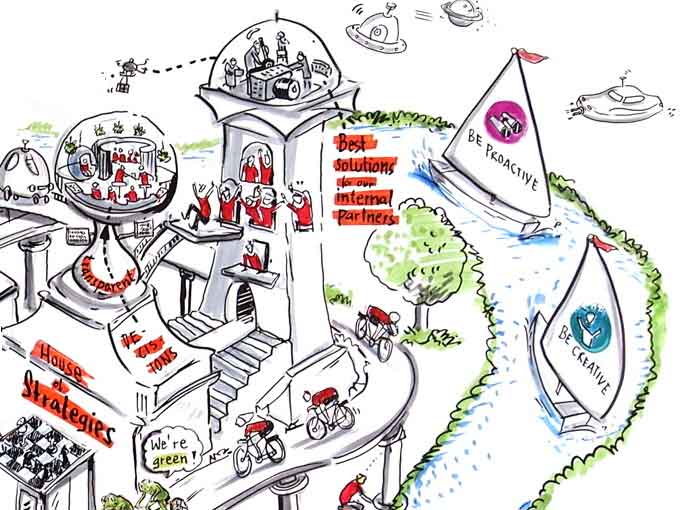
Folgen Sie meinen Posts auch auf:
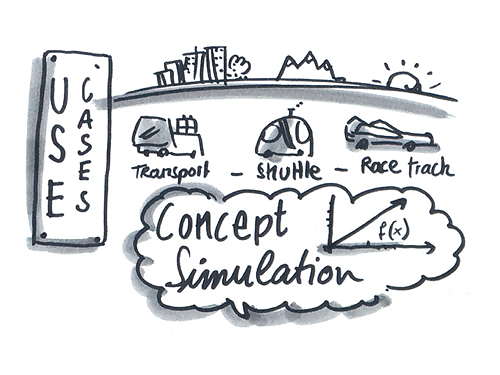
19 Apr., 2017 | Blog, graphic recording, visual facilitating
Ein Erklärungsversuch zu Visual Facilitating
Elizabeth Pastor lehrt an der Harvard Business School, N.Y. Sie ist Spezialistin für Visual Sensemaking und Co-Kreation.
Die beiden ”Visual-Modelle“ Graphic recording und Visual Sensemaking sind hier Ihr Thema. Es geht um Unterschiede, Zusammenhänge und Abgrenzungen. Es gibt auch einige Überschneidungen, sagt Sie, grundsätzlich wird aber von andersartigen Skill-Sets ausgegangen. Die Ergebnisse sind nach Visual Sessions mit diesen beiden Methoden unterschiedlich. Oder fühlt sich das nur so an ?
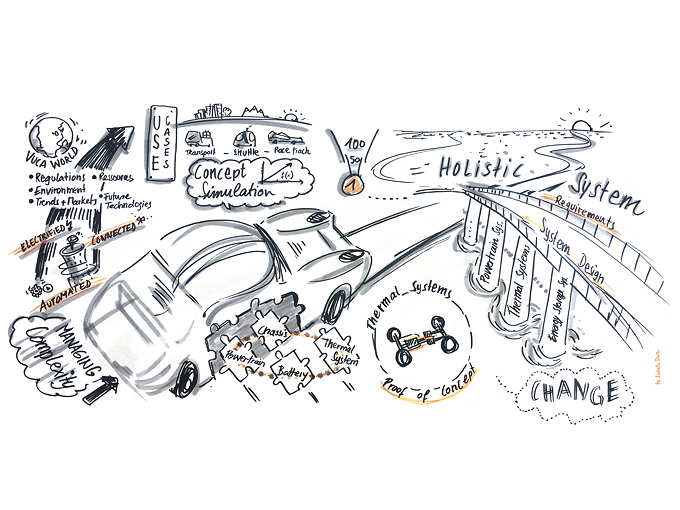
Was ist nun das typische beim Graphic Recordings:
- Die USP von Graphic recording ist das visuelle l i v e protokollieren auf Veranstaltungen Und zwar aus der Perspektive, der Wahrnehmung des Graphic Recorders
- Skills: Live hören, verstehen, visualisieren, sehr schnelle Arbeitsweise, Großes Basis-Wissen zu diversen Themengebieten. Große visuelle „Datenbank“/Repertoire
- Style: grafisch, Illustratorisch, typografisch
- Endprodukt: Meist eine 2-5m lange Papierwand mit Schrift und Zeichnungen
- Wo: auf der Seite oder vorne im Veranstaltungsraum
- Art der Aktivität : „passiv“ (protokolliernd), individuell
- Rolle: Visuelle Aufnahme und Interpretation des Gesprochenen ohne Interaktion mit der Gruppe
Und das typische an Visual Sensemaking:
- Der Zweck: Klärt eine Aufgabe oder Fragenstellung, ermöglicht Verstehen und informiert
- Style: Diagramme, infografik, Mindmap-ähnlich
- Endprodukt: Meist eine Serie verschiedener Infogramme
- Skills: Skills: Live hören, verstehen, Infografik am Whiteboard/Flipchart, problemlösendes Facilitieren
- Wo: Vorne
- Art der Aktivität: Aktiv in Kollaboration mit der Gruppe
- Rolle: Lösungsorientiert. Das Visuelle/ Sichtbar-Gemachte unterstützt die Suche
Einige Kommentare zu Elizabeth’s Post lauten wie dieser von Marcelo Alvarez Bravo: ”Is graphic facilitator the same as a visual sensemaking? Important, said facilitator not recorder “.
Da hat der Mann recht, so finde ich. Ist Visual Facilitating also gleichbedeutend mit Visual Sensemaking ? Ich gehe einen Schritt weiter und sehe das klassische Graphic recording, wie Elizabeth es beschreibt, nicht in dieser reinen Protokollier-Rolle. Auf meinen Veranstaltungen lade ich alle Teilnehmer ein, mit mir ins Gespräch zu gehen, das wachsende Bild zu „lesen“, einzuhaken und auch zu widersprechen. Der höchste Mehrwert jedes visuellen Tuns entsteht mit der Interaktion der Beteiligten.
Hier geht’s zum englischen Text 10 years ago, there was a boom in visual thinking. We see this interest continuing to rise in how visual thinking can contribute to complex change-making in organizations and societies. We are happy campers! However, what has come with that rise of visual thinking is also confusion regarding the value and differences between various visualization techniques and approaches.

7 Okt., 2016 | Blog, Design Thinking, Grafische Visualisierung, Innovation, Strategie-und Business-Illustration, visual facilitating, visual storytelling, Workshop
Neuer Kooperationspartner in der Schweiz
Gestalten Sie die Zukunft? Setzen Sie Leitsterne? Kommunizieren Sie mit starken Bildern?
Möchten Sie noch stärker auf die unmittelbare Kraft der Visualisierung setzen?
Hier finden sie alles unter einem Dach:
Einer der Spezialisten vor Ort, Daniel Osterwalder ist Gründer und Facilitator bei der in der Schweiz ansässigen
Osterwalder & Stadler GmbH und arbeitet als Design Thinker, Change Facilitator, Lego Serious Play Facilitator und Graphic Recorder.
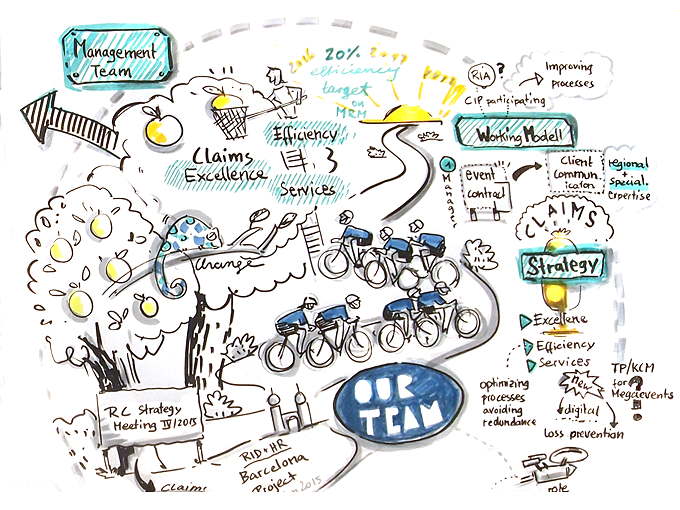
1 Okt., 2015 | Blog, visual facilitating
Working across organizational boundaries –
About ORGANIZATIONAL STRUCTURES, Collaboration and Globalization
by Jack Welch
Working across organizational boundaries was a new way of thinking 25 years ago —one that was largely championed by Jack Welch, then CEO of GE. Welch was convinced that the speed of globalization and technological innovation in the 21st century would require companies to work very differently – with shorter decision cycles, more employee engagement, and stronger collaboration than had previously been required to compete. He advocated for a “boundaryless organization,” and to build it, he initiated what became known as the GE Work-Out process – a series of structured and facilitated forums, bringing people together across levels, functions, and geographies to solve problems and make decisions in real time.
Fast forward to today, and we live in a different world. Our communications technologies have dramatically improved, and we have instantaneous access to massive amounts of information. Welch’s “boundaryless organization” should seemingly be the de facto reality for most companies.
To the contrary, however, many organizations still have hierarchical, siloed, and fragmented processes and cultures. In fact, having to cope with a fast-changing global economy has led many companies to create even more complex matrix organizations, where it’s actually harder to get the right people together for fast decision-making. As a result, we still need the Work-Out process to improve cross-boundary collaboration.
I learned this from working with senior executives at one of the world’s largest high-tech engineering companies recently, who were concerned that many of their big customer programs were over budget and behind schedule. After some investigating, they discovered that their fragmented, geographically dispersed matrix structure made it very difficult for the program managers to coordinate efforts across functions, keep everyone focused on the cost and delivery goals, and get people to reach consensus.
To illustrate this problem, we can look at one program manager – let’s call him Tom – who had to coordinate among a dozen specialized engineers. Since each reported to different departments, Tom would constantly go back and forth with the engineers’ managers regarding disputes over overscheduling and conflicting priorities. At the same time, Tom was looping in supply chain partners, as well as quality, sales, and finance teams that were dispersed around the globe. Because of how siloed these functions were and how many different layers of command Tom had to go through, it was nearly impossible to bring these units together when needed. Decisions were delayed or not executed, and of course the program’s performance suffered.
While tools like video-conferencing, virtual workspaces, and instant messaging helped people communicate, they didn’t help with getting everyone aligned on the same priorities, nor did they foster rapid decision-making.
Senior management knew this was an issue. But they also valued the lower cost and flexibility of having functional experts reside in different centers of excellence so that they could be assigned to programs as needed when workloads shifted —a culture that had evolved over many years. They didn’t want to implement processes that prevented this. So instead of changing this structure, they asked their teams to initiate the Work-Out process to improve collaboration and speed up decision-making across the various organizational boundaries.
A neutral facilitator was brought in from an internal “lean consulting” group to lead each Work-Out. These sessions physically brought together all the people who were working on different aspects of a single customer program, including the program manager, the 20-30 key engineers and experts involved, and managers from functions like procurement, sales, and finance. In preparation, the program manager defined the issue, pulled together the relevant data, and recruited a senior executive to serve as the on-the-spot decision maker at the end of the session. The main goal was that these cross-functional teams had to reach consensus on a solution in two days—and devise a plan for executing it. They would present this at a “town meeting” on the second day, and the senior exec would then say yes or no to the various recommendations…
read more
4 Aug., 2014 | Blog, Event, graphic recording, visual facilitating
Eine junge Kombo aus talentierten Graphic Recordern unterstützen das Economy-Event SOL global Forum, das in Paris stattfand. Das „Powerl-Tool für Großveranstaltungen, um den vielen Teilnehmern die Möglichkeit zu geben, alle Inhalte in einem grafischen Überblick mitzunehmen.
>Throughout the plenary sessions, a graphic team member took visual notes – also called scribes – of the major discussion points. Those giant notes were kept and exposed >throughout the days for participants to revisit, reflect and discuss. Enrico, Elise and myself were mostly involved in this part of the job.
Hier findest du einige schöne Mood Pics: Solglobalforum | Tools – The magic of graphic facilitation
26 Mai, 2014 | Blog, Grafische Visualisierung, graphic recording, visual facilitating, visual sketchnoting
Unser Netzwerk an visual facilitators und graphic recorders ist nicht nur in ganz Deutschland gut aufgestellt: Von Hamburg über Frankfurt und Köln nach München, bis nach Zürich und Bern und weiter nach Wien.
Unsere österreichischen Kollegen stellen sich hier vor.
Professionelles Graphic Recording steht nun auch in Österreich zur Verfügung – „Wir zeichnen das gesprochene Wort simultan mit“, meint Paul H. Tontur auf die Frage nach einer Definition des Begriffs, der in Österreich noch nicht recht geläufig ist. Und das, obwohl Graphic Recording in den USA bereits seit den 1970ern bei Vorträgen, Podiumsdiskussionen, Tagungen, Strategiemeetings, Seminaren, Workshops oder ähnlichen Veranstaltungen zum Einsatz kommt. Die Kernbotschaften werden beim Graphic Recording live in eine sofort verständliche Bildsprache übertragen und in Beziehung zueinander gesetzt. „Dabei entsteht vor den Augen des Auditoriums ein meist mehrere Meter langes, visuelles Protokoll. Der Schaffensprozess der Zeichnung führt beim Publikum zu einer deutlich gesteigerten Aufmerksamkeit. Außerdem wirken die Bilder wie Eselsbrücken, die in weiterer Folge zu einer viel höheren Erinnerungsleistung führen“,
thttp://www.newscomm.de/pm/87050/the-graphic-recording-company-der-mehrwert-ist-der-merkwert.html
wir hier in München
und in Hamburg
unsere Kollegen in der Schweiz






